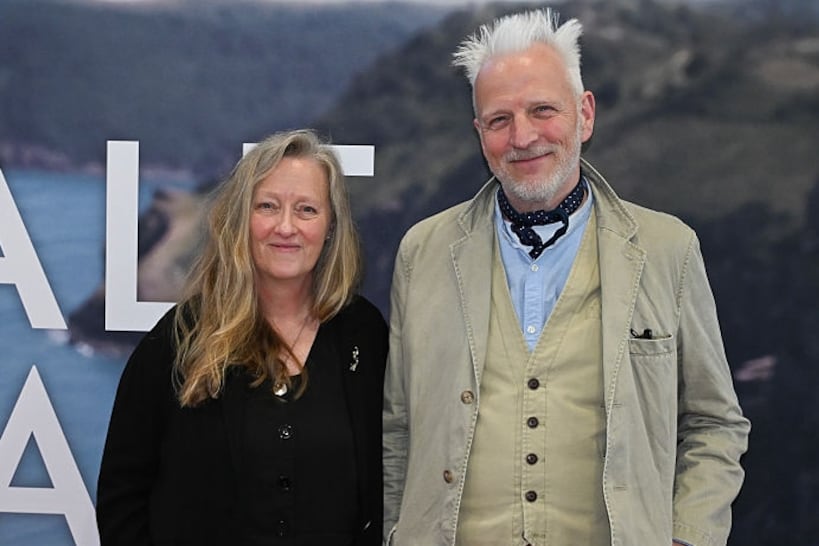John Joyce, the father of James, was himself a brilliant wordsmith: a wit, storyteller and fine singer, all qualities he passed on to his son. By contrast, he was not so talented with numbers, a fact that may also have had a profound influence on the writer.
Joyce snr once declared himself to have fathered “16 or 17 children”. The official count, with his wife May at least, was 10 who lived, and three stillbirths or miscarriages. But he was also notoriously careless in business, especially with his housing portfolio, which declined in inverse proportion to the family.
Joyce’s trajectory in property was not so much a calculating ascent of the ladder as a pressurised descent of the fire escape. Having started with a substantial inheritance of Cork real estate, he turned it into a series of mortgages in Dublin, following a pattern closely associated with paternity.
In his biography of James Joyce, Richard Ellmann makes the link explicit: “During his wife’s second pregnancy, on December 2nd 1881, [Joyce snr] mortgaged the first of his Cork properties. The second child, James Augusta (as the birth was incorrectly registered), was born on February 2nd, 1882.” Three mortgages followed in 1883, “and then Margaret Alice (”Poppie”) was born on January 18th, 1884. On August 5th, 1884, another property was mortgaged; John Stanislaus (“Stannie”) was born on December 17th, 1884, and Charles Patrick on July 24th, 1886.
READ MORE
“There were two other mortgages on April 21st and May 6th, 1887, and George Alfred was born on his father’s birthday, July 4th, 1887. Eileen Isabel Mary Xavier Brigit was born on January 22nd, 1889, Mary Kathleen on January 18th, 1890, and Eva Mary on October 26th, 1891. Then came Florence Elizabeth on November 8th, 1892, who was followed by mortgages on December 24th, 1892, and January 13th, 1893. Mable Josephine Anne (”Baby”) was born on November 27th, 1893, and two mortgages, on February 8th and 16th, quickly followed her.”
There, under both headings, the business ended. As Ellmann sums up: “There were no more babies, and after 11 mortgages, there was no more property. John Joyce filled his house with children and with debts.”
Not all the 20 or so changes of address undergone by the family were downmarket. Some earlier ones marked a step up, and at least one was sideways and strategic, when the patriarch relocated from Rathmines to Bray to be (a) nearer the sea and (b) farther from his in-laws, the Murrays, who he calculated would be deterred from visiting by the train fare.
But as the years passed, the drift was generally downhill, with an increasing tendency towards sudden flits to escape unpaid rent. The very multiplicity of the family’s addresses must have influenced the future writer. Small wonder he had an intense relationship with the geography of Dublin, having lived in so much of it.
John Joyce’s disastrous property dealings had a comic denouement one night in 1902, also detailed by Ellmann. With his family on the way to independence, he had decided it was time to reverse the long slide and commute half his pension into buying a house in Phibsborough.
This proved yet another bad decision, because with his extravagant social life, he couldn’t survive on a half pension, so he quickly had to take out another mortgage. In the meantime, he celebrated his latest move by getting drunk.
Late that night, as they waited for a tram at Nelson’s Pillar, two friends saw him staggering down Sackville Street and took it upon themselves to ensure he got home safely. The problem was that he moved so often, they weren’t sure where he lived and he was in no condition to advise. So they put him on the last tram to Dollymount, his last known address, and warned the driver not to let him off early.
One of the friends, Alfred Bergan, later recorded that when they met him again, a few days afterwards, he was limping and blamed his injury on “some blackguards” who had put him on the wrong tram. After first sitting on a wall in Dollymount, crying at his plight, he had had no choice but to walk to Phibsborough.
His account of this long dark journey of the soul was worthy of Ulysses (a book James Joyce called his father’s “spitting image”). The trek to Fairview alone felt “seven miles long”, he claimed. Clonliffe Road seemed like another “five”, Whitworth Road “four”. When, after many enforced rests, he finally made it home at 5am, he “fainted” into his wife’s arms and spent all next day in bed, unable to walk, with a blister on his heel the size of a “pigeon’s egg”.












